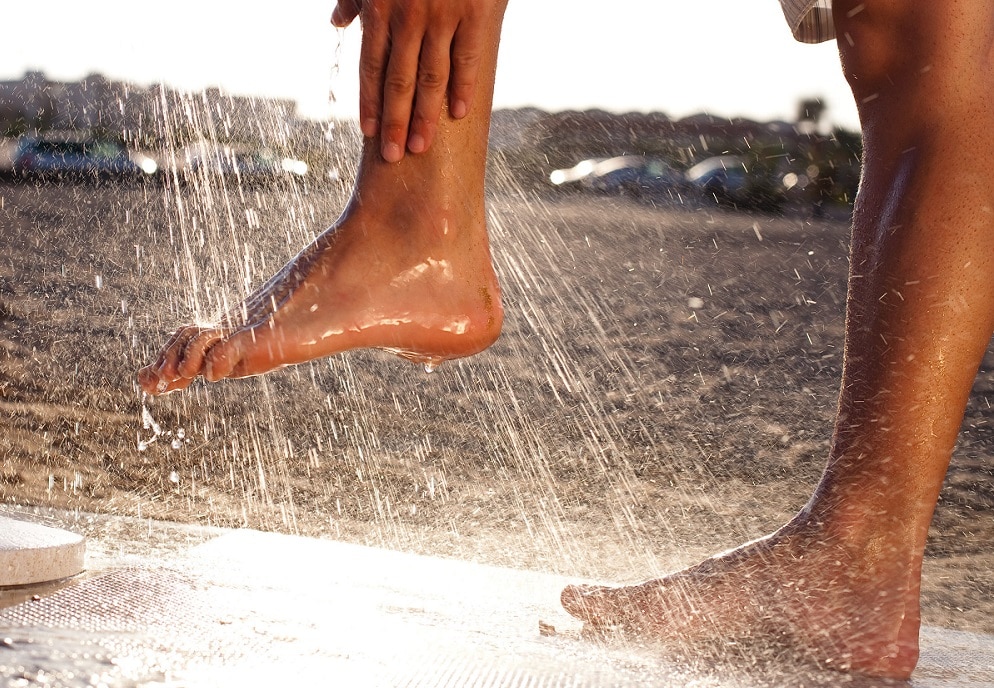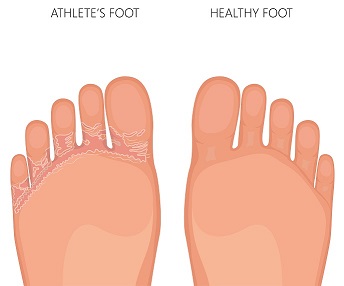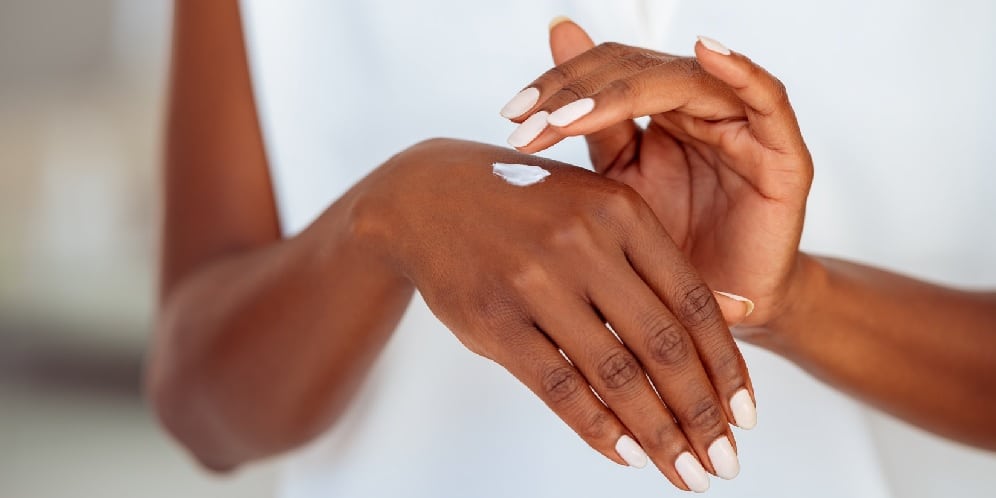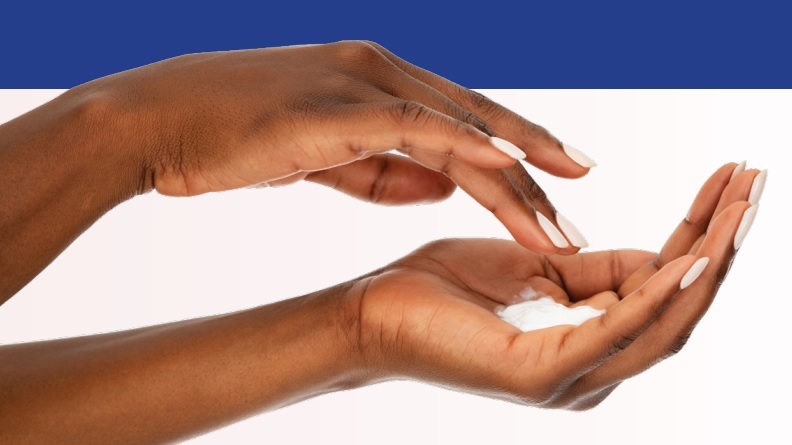Athlete’s Foot

WHAT IS ATHLETE’S FOOT?
Athlete’s foot belongs to a cluster of fungal skin conditions known as tinea that include ringworm, jock itch, and onychomycosis (nail infection):2a,3a
- Ringworm of the scalp, as the name suggests, occurs on the head and is known as tinea capitis
- Ringworm of the body occurs on the body and is known as tinea corporis
- Jock itch occurs on the groin and is known as tinea cruris
- Nail infection is tinea of the toenails or finger nails and is known as tinea unguium
- Athlete’s foot is tinea of the foot and is known as tinea pedis3b

WHAT CAUSES ATHLETE’S FOOT?
Athlete’s foot is caused by a type of fungus or dermatophyte (tinea), which needs keratin (found in hair, nails and skin) to grow.4 The tinea fungus breeds in warm moist environments and affects the top layer of skin.5a Usually starting between the toes and spreading to the soles of the feet it can spread elsewhere if you touch the infected area and then touch another part of your body. 2b
The fungus that causes athlete’s foot thrives in damp environments such as communal showers, locker room floors, gym change room floors and around swimming pools. So, people who play a lot of sport and regulary go to the gym are more likely to become infected. This is why the term ‘Athlete’s foot’ is used to describe tinea pedis 6a
WHO IS AT RISK?
Athlete’s foot is a common skin condition with some risk factors such as:
- Allergies and/or eczema
- Feet that sweat a lot
- A weak immune system – from serious illness or long-term use of medication that could weaken your immune system
- Circulation problems in your legs – common in people with diabetes or narrowed blood vessels
- Barefoot use of public showers and locker rooms at the gym7a
YOU CAN GET ATHLETE’S FOOT THROUGH:
- direct contact with someone who has it by touching surfaces, floors particularly but also
- other surfaces that are contaminated with the fungus
- sharing socks, shoes or towels with an infected person.5b
SIGNS AND SYMPTOMS
The signs and symptoms of athlete’s foot vary from person to person. You may have some or only one of the typical symptoms such as:
- Itching, stinging and burning between your toes or on the soles (underside) of your feet
- Scaling, peeling or cracked skin, usually between your toes and on the sides or soles of your feet
- Redness on the soles of your feet
- Inflammation or swelling
- Blisters which may lead to cracking or peeling skin on your feet and toes – when blisters burst, small raw skin is exposed, which may also cause swelling 5c, 6b

DIAGNOSIS AND TREATMENT
While usually mild, without treatment, in rare cases athlete’s foot can lead to serious bacterial infections. In most cases over-the-counter antifungal creams will usually clear up the infection. But for more serious infections you may need to see a doctor, dermatologist or podiatrist (foot doctor) for a thorough diagnosis and prescription medication.8a
He or she may be able to diagnose the affected area by looking at it and discussing your symptoms. They may also scrape off a small area of infected skin to test for the fungus that causes athlete’s foot.5d, 8b
You should always see a doctor if your athlete’s foot does not improve after self-treatment, if you have diabetes and suspect that you may have athlete’s foot, or if you notice any signs of a possible secondary bacterial infection. Signs may include excessive redness, swelling or fever.9
Not all fungal infections of the foot are athlete’s foot. Other conditions such as eczema and psoriasis may mimic (present with similar signs and symptoms) as athlete’s foot. 6c
PREVENTION OR STOPPING IT FROM SPREADING
To reduce your risk or, if you already have it, to prevent it from spreading:
- Keep your feet clean, dry and cool
- Dry your feet thoroughly after swimming or showering, especially between your toes
- Do not wear shoes that are too tight so that your feet cannot breathe
- If you exercise or play sport regularly wear trainers that are well ventilated
- Wear clean socks made from breathable fibres such as cotton or wool, or wear socks made from synthetic fibres that are specially designed to wick away moisture (draws moisture away from your skin)
- Try not to wear the same shoes every day
- Take your shoes off as often as possible but,
- Do not walk barefoot in public areas – wear flip flops in locker rooms, gyms and public showers
- Wash your socks, linen and towels in hot water that is 140F (60C)
- Use an antifungal cream, spray or gel 2c, 5e, 7b, 10
He or she may be able to diagnose the affected area by looking at it and discussing your symptoms. They may also scrape off a small area of infected skin to test for the fungus that causes athlete’s foot.5d, 8b
You should always see a doctor if your athlete’s foot does not improve after self-treatment, if you have diabetes and suspect that you may have athlete’s foot, or if you notice any signs of a possible secondary bacterial infection. Signs may include excessive redness, swelling or fever.9
Related Brochures

dry-skin

infant-eczema-and-cradle-cap
